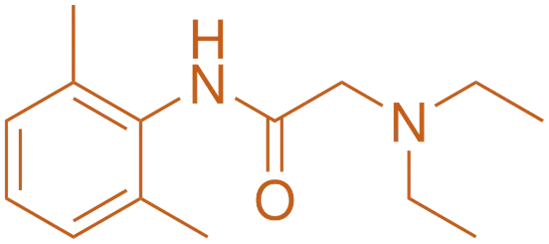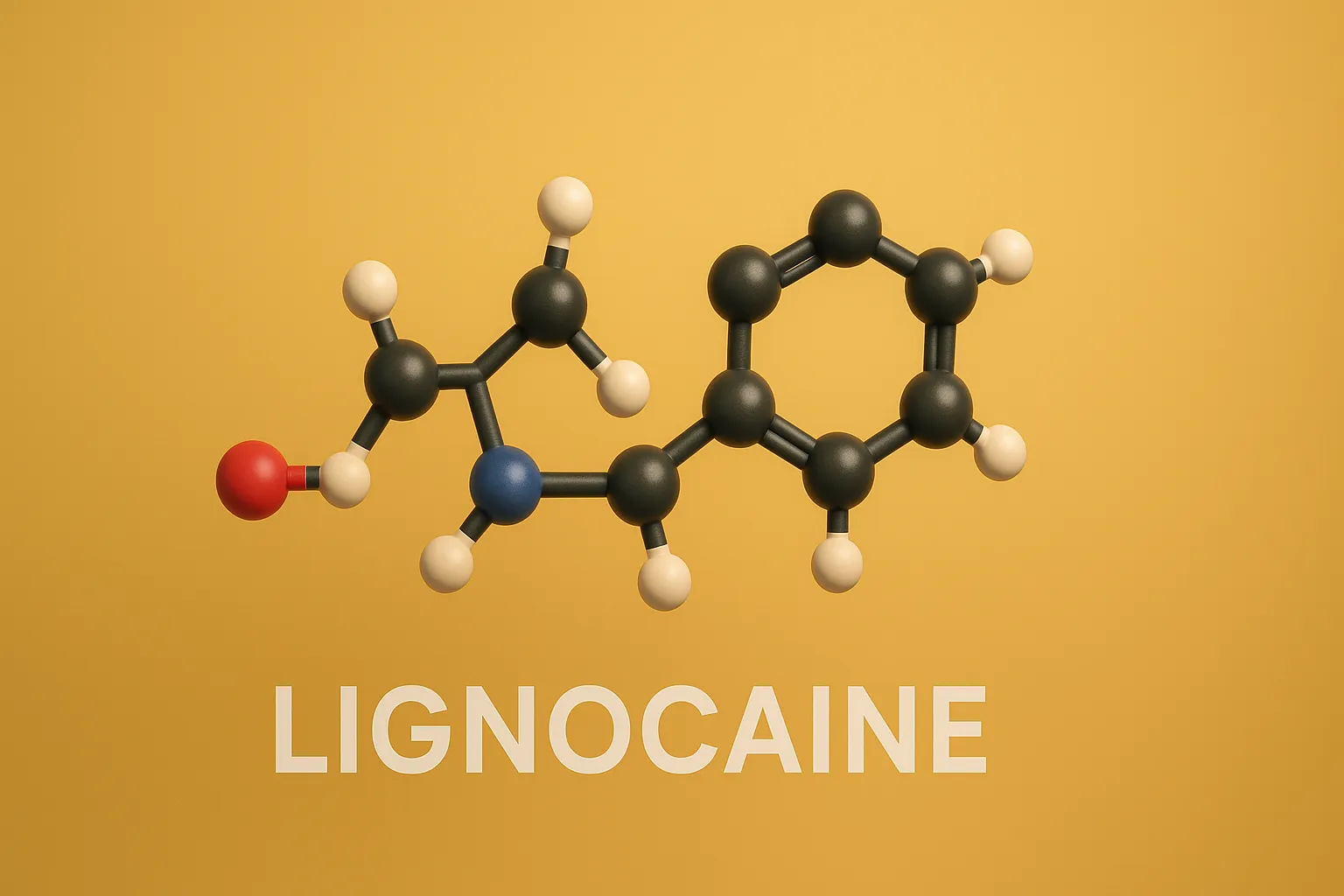Lignocaine (Lidocaine) is a widely used amide local anesthetic for infiltration, nerve blocks, and surface anesthesia.
Structure of Lignocaine
- Lignocaine, commonly known as Lidocaine, is an amide-type local anesthetic with a diethylaminoethyl side chain attached to a 1,5-dimethyl-2-phenyl-4-imidazolidinone core.
- Chemical Formula: C₁₂H₂₁N₃O

Mode of Action
- Voltage-Gated Sodium Channel Blockade: Inhibits sodium influx, preventing nerve impulse conduction.
- Membrane Stabilization: Enhances neuronal membrane stability, reducing excitability.
Uses
- Local Anesthesia: Widely used in dental procedures, minor surgeries, and topical applications.
- Cardiac Arrhythmias: Administered intravenously to manage ventricular arrhythmias such as ventricular tachycardia and ventricular fibrillation.
- Topical Preparations: Applied as creams, gels, and patches for localized pain relief.
Side Effects of Lignocaine
- Local Reactions: Redness, swelling, or irritation at the application site.
- Systemic Toxicity: CNS symptoms (dizziness, seizures) and cardiovascular disturbances (arrhythmias, hypotension) in high doses.

